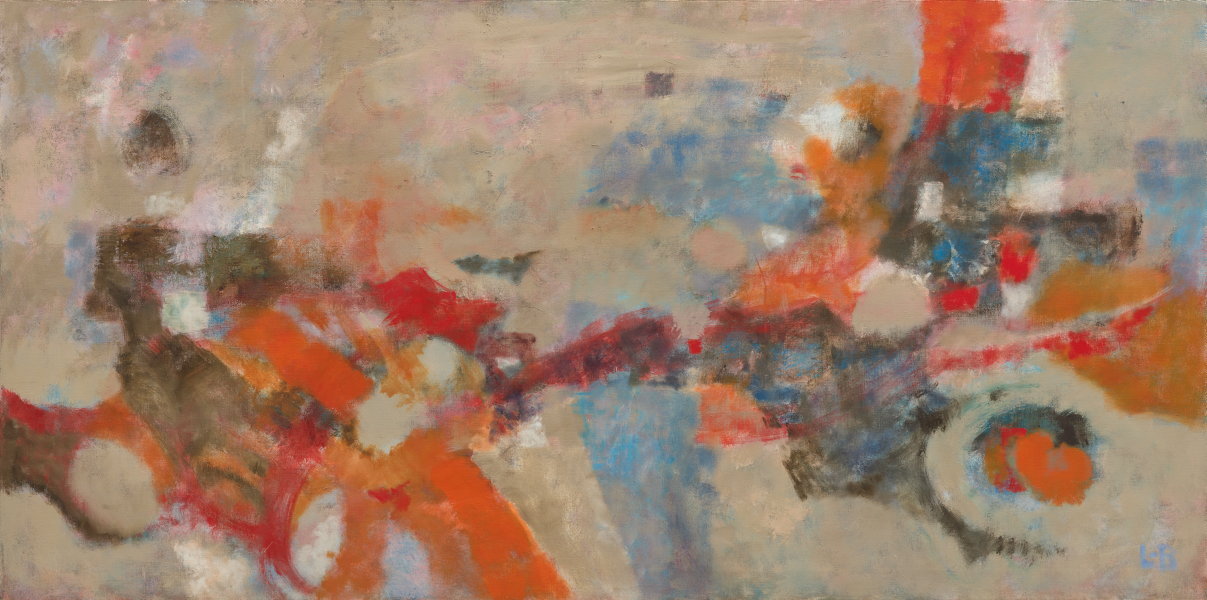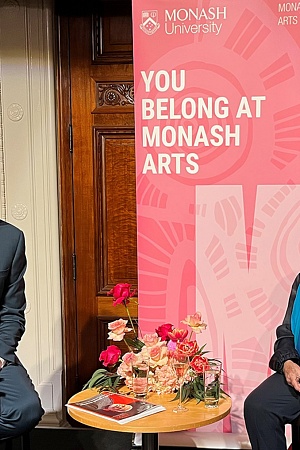Mitty Lee-Brown: artist in exile
Nilaveli, on the north-east coast of Sri Lanka, is a long way from Sydney’s S.H. Ervin Gallery, but when in 2017 I visited the exhibition Margaret Olley: painter, peer, mentor, muse, which traced the links between Olley and her circle, the name of one of her fellow artists took me straight back to the white sands of Nilaveli Beach.
Juanita ‘Mitty’ Lee-Brown (1922-2012) and Margaret Olley were almost exactly contemporaries. They met when they were studying art at the East Sydney Technical College in 1944 and 1945. In 1949, they shared a cabin on a ship to England. Over the decades their paths continued to cross, but the end of their days found them far apart. Olley had become a Sydney fixture, the doyenne of Australian art, whereas Lee-Brown was a recluse, living at Nilaveli, as she had done throughout Sri Lanka’s civil war, which began in 1983 and ran for twenty-six bloody years.
 Spring (1964) by Mitty Lee Brown (© Art Gallery of New South Wales)
Spring (1964) by Mitty Lee Brown (© Art Gallery of New South Wales)
In years gone by Australians tended to look askance at their fellow countrymen and women who chose to live abroad; there was a sense of ‘aren’t we good enough for you?’ Against this background, art critic John McDonald judged Lee-Brown’s decision to live abroad a bad career move. Speaking of her work in the Ervin exhibition, McDonald commented in his Sydney Morning Herald review that Lee-Brown ‘could have been a force in Australian art had she not left the country so early in her career’. Perhaps.
Lee-Brown is now remembered, if at all, as a minor figure in the ‘Merioola’ group, the 1940s artistic circle associated with the Woollahra boarding house of that name. But even though Sydney was Lee-Brown’s home town, she didn’t spend much time there. In 1945 and 1946, on leaving art school, she lived with her first husband, the journalist Peter Russo, in Melbourne and Hong Kong. In 1947 and 1948, and again from 1949 until 1962, she was in Europe, including Italy, the home of her second husband, the poet and filmmaker Nelo Risi. She then moved back to Sydney, where in 1964 she and Donald Friend, who had also lived at Merioola, mounted a joint exhibition at Sydney’s Terry Clune Galleries. So at this point she did have a footing in the Australian art world. But when her third marriage, to a Monaro grazier, ended in 1968, she went into a self-imposed exile that lasted forty-four years. Why did she remove herself from the milieu that proved so fertile for her peer Margaret Olley?
Continue reading for only $10 per month. Subscribe and gain full access to Australian Book Review. Already a subscriber? Sign in. If you need assistance, feel free to contact us.













Leave a comment
If you are an ABR subscriber, you will need to sign in to post a comment.
If you have forgotten your sign in details, or if you receive an error message when trying to submit your comment, please email your comment (and the name of the article to which it relates) to ABR Comments. We will review your comment and, subject to approval, we will post it under your name.
Please note that all comments must be approved by ABR and comply with our Terms & Conditions.